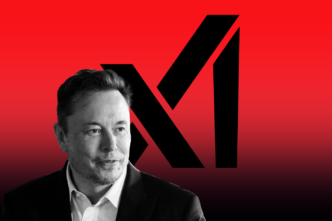In recent years, artificial intelligence has shifted away from its collaborative roots. Once open and community-driven, the field is now dominated by tightly controlled proprietary systems. OpenAI, despite its name, moved toward secrecy after 2019. Other major players like Anthropic and Google followed, building powerful AI tools that remain locked behind paywalls and limited APIs. While these companies cited safety and business interests, many in the tech world have missed the spirit of open innovation.
But the tides are turning. Meta’s new Llama 4 models signal a strong comeback for open-source AI, reigniting hope for accessible, community-driven development. Even traditional rivals are paying attention. OpenAI’s CEO Sam Altman recently admitted the company may have been “on the wrong side of history” when it came to open models, and hinted at plans to release a new open-weight version of GPT-4. This shift suggests that open-source AI is not only making a comeback—it’s evolving.
Llama 4 Challenges the AI Titans
Meta has officially thrown down the gauntlet with Llama 4, positioning it as a direct competitor to proprietary giants like GPT-4o, Claude, and Gemini. Llama 4 currently includes two models—Scout and Maverick. Both use a Mixture-of-Experts (MoE) architecture, which activates only a fraction of the total parameters per query. This approach keeps costs low while boosting performance.
Llama 4 Scout activates 17 billion parameters per input from a pool of 109 billion, spread across 16 expert paths. Maverick, the more advanced sibling, uses 128 experts totaling 400 billion parameters—still only activating 17 billion at a time. The result? Strong performance that rivals leading closed models, but with key advantages.
Game-Changing Features That Set Llama 4 Apart
Scout, for instance, features a groundbreaking 10 million token context window. That’s orders of magnitude more than what most models can handle, allowing developers to process long documents or codebases in a single pass. Even more impressive, Scout can run on a single H100 GPU with high quantization, meaning powerful AI is now within reach—even without supercomputers.
Maverick, meanwhile, is all about raw capability. Early benchmarks show it matching or outperforming top closed models in tasks like reasoning, coding, and vision. Meta is even teasing a more powerful version—Llama 4 Behemoth—currently in training. Internally, Behemoth reportedly beats GPT-4.5, Claude 3.7 Sonnet, and Gemini 2.0 Pro in multiple STEM benchmarks. The message is clear: open-source models are no longer a step behind.
Instant Access: Why Llama 4 Is a Developer’s Dream
Crucially, Meta is making these models freely available. Scout and Maverick can be downloaded via Meta or Hugging Face under the Llama 4 Community License. This license lets anyone—from indie developers to large corporations—fine-tune and deploy the models on their own infrastructure. It’s a stark contrast to platforms like OpenAI or Anthropic, where users pay to access models but never see the underlying architecture.
Meta frames this openness as a way to empower users. The company says Llama 4 will help people “build more personalized multimodal experiences.” In practice, it means developers get to experiment, tweak, and create without restrictions—reviving the idea that world-class AI doesn’t need to sit behind a paywall.
Meta’s Vision: Altruism or Strategy?
CEO Mark Zuckerberg has leaned into this message. He recently shared that Llama models have been downloaded over a billion times. That’s up from 650 million just a few months ago. Major companies like Spotify, AT&T, and DoorDash are already using Llama models in production. Meta highlights that open models offer better “transparency, customizability, and security” than black-box alternatives, sparking innovation on a global scale.
Yet, it’s important to note that this openness has limits. Llama 4’s Community License is not fully open in the traditional sense. While model weights are accessible, Meta retains control over some high-volume or commercial use cases. It’s not OSI-approved open source—critics argue the term “open-source AI” is being stretched. In truth, Llama 4 falls under the “open-weight” or “source-available” category: useful, accessible, but not fully transparent.
Strategic Power Play: Meta’s Long-Term AI Game
Why go open at all? Strategy. By releasing high-performing models for free, Meta builds developer trust, captures enterprise interest, and shapes AI standards. French startup Mistral used a similar playbook—launching strong open models to quickly earn credibility. Meta is doing the same at a much larger scale. The more Llama becomes a go-to tool, the more Meta influences the AI world.
There’s also the optics. OpenAI has faced criticism for gatekeeping powerful tools. Meta, by contrast, looks like the generous innovator. That image is powerful—enough to trigger OpenAI’s public shift toward openness. In fact, when Chinese open-source model DeepSeek-R1 surged ahead in early 2025, Sam Altman acknowledged OpenAI had to rethink its stance to stay relevant.
Real Benefits: What Llama 4 Means for Developers and Enterprises
For developers and businesses alike, Llama 4 changes the game. Developers gain direct access to model internals, enabling domain-specific tuning for industries like healthcare, legal tech, or regional language support. Enterprises benefit even more. With Llama 4, companies can run models in-house, keeping sensitive data private. No API calls, no data leakage risks.
Financially, it’s a smart move too. API usage fees for top-tier models can pile up fast. With open models, businesses pay only for the compute. For large-scale applications, this can lead to major cost savings—especially in sectors where security, performance, and scalability are top priorities.
The Limits of Openness: Hardware and Safety Concerns
Still, open-source AI isn’t perfect. Running Llama 4 at full strength requires robust hardware. Although Scout and Maverick are more efficient than past models, they’re still heavyweights. Smaller teams or solo developers might need cloud support to get started. Over time, we may see lighter versions or compressed models that bring this power to a wider audience.
Then there’s the issue of safety. Critics warn that open models can be misused for harmful tasks—generating disinformation, malware, or harmful content without the safety guardrails enforced by commercial APIs. But supporters argue that community-led development brings its own protections. Open communities often build safety layers and share best practices, creating transparency that closed systems lack.
A Hybrid AI Future: Where Llama 4 Fits In
In the end, we’re likely moving toward a hybrid AI ecosystem. Closed systems still lead on raw performance, but open models are catching up. As of late 2024, the best open models trailed closed ones by about a year. But that gap is narrowing fast. Open-source AI isn’t just for hobbyists anymore. It’s becoming central to how tech giants and startups build, deploy, and imagine the future.
Meta’s Llama 4 proves that openness can be both a powerful tool for innovation and a strategic move in a competitive market. It gives developers and enterprises freedom, control, and savings. At the same time, it forces the industry to rethink what openness truly means—and whether the benefits of AI should be gated or shared. If Meta’s gamble pays off, the age of open-weight, high-performance AI may just be getting started.













